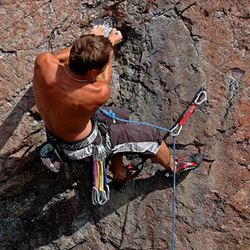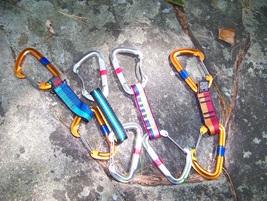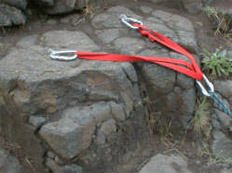Sport Climbing Gear

If you're interested in breaking into sport climbing, you'll probably spend some time using other people's gear, but you'll soon realize that having your own gear is both comforting and empowering. You will know intimately the history of your gear, and therefore know it's reliability. With your own sport rack, you won't just be a belay monkey and will get to captain your own adventures. And lucky for you, a full sport rack will cost you less than $200.
Before investing in the gear, however, make sure you have taken a class from a qualified instructor on how to lead bolted climbs and how to lead belay. Also review our pages to reinforce these skills. Assuming you have all the Beginning Gear, you will need:
1. (More) Quickdraws

A quickdraw is two carabiners and one dogbone, or short sling. It is also nice to have a few extendable, or alpine quickdraws for some sport routes. For most sport routes, you will only need about 10 or 12, but if you don't want to get stuck plan on collecting about 15 quickdraws for a complete rack.
Wire gate or standard gate is a matter of personal preference, but keygate biners are certainly preferable if you don't like wire gate. That's because they don't snag on bolts when you are cleaning. Bent gates also help with making clean clips. The most inexpensive quickdraws are usually Omega Pacific Dirtbags, but we like the Black Diamond Posiwire and the Camp Orbit Dyneema. Invest a bit more and you will never regret it. |
|
2. 48" Runner

For when you get to the top of the route and need to Set a Bolted Anchor. Also, sometimes things are just a bit too runout, and having a sling to anchor off a tree or solid horn can put your mind at ease. Buy a beefy nylon one to save money, or go for a sleek Dyneema one if you are feeling flush.
